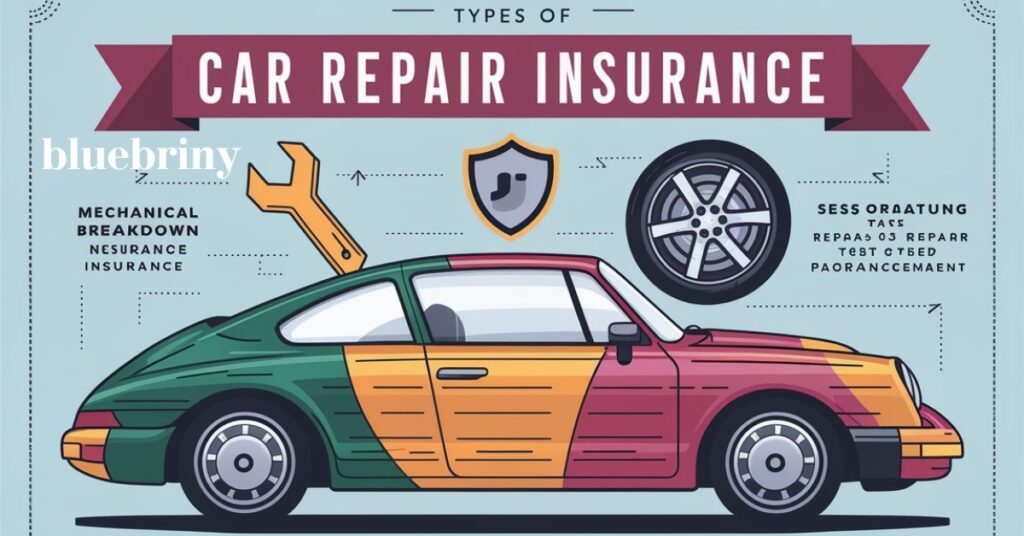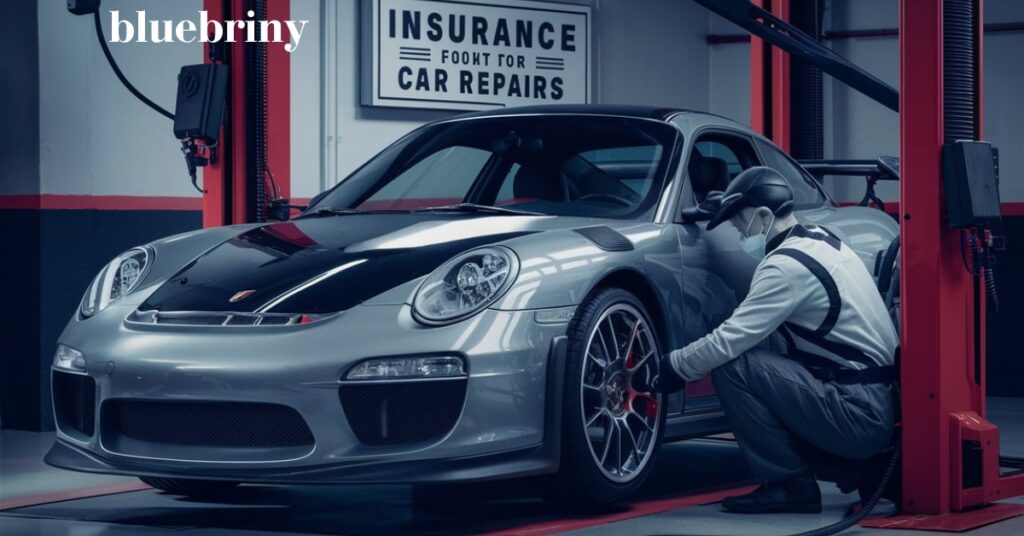Introduction to Insurance for Car Repairs
Insurance for Car Repairs can be costly, and unforeseen mechanical issues can put a significant dent in your finances. Insurance for car repair, often referred to as mechanical breakdown insurance (MBI) or extended warranties, offers a safety net against these unexpected expenses. This type of coverage helps ensure that your vehicle remains in good working condition without draining your savings.
What is Insurance for Car Repairs?
Insurance for car repairs is designed to cover the cost of repair after a vehicle experiences a mechanical failure or breakdown. Unlike standard auto insurance policies that cover damages from accidents, theft, or natural disasters, mechanical breakdown insurance focuses specifically on the internal components of the vehicle. It covers the cost of repairs or replacements of parts such as the engine, transmission, and electrical systems.
Types of Car Repair Insurance

There are generally two main types of car repair insurance: manufacturer warranties and third-party extended warranties.
Manufacturer Warranties
When you purchase a new car, it typically comes with a manufacturer’s warranty. This warranty covers certain repairs and services for a specified period or mileage, usually ranging from three to five years or 36,000 to 60,000 miles, whichever comes first. Manufacturer warranties often include:
- Basic or Bumper-to-Bumper Warranty: Covers most parts and systems of the vehicle except for wear-and-tear items like tires and brake pads.
- Powertrain Warranty: Specifically covers the engine, transmission, and other drivetrain components.
Third-Party Extended Warranties
Once the manufacturer’s warranty expires, you can opt for a third-party extended warranty. These warranties can be purchased from the vehicle’s manufacturer, dealerships, or independent warranty providers. Extended warranties can vary widely in terms of coverage and price, but they generally fall into three categories:
- Stated Component Coverage: Lists specific parts and systems that are covered.
- Exclusionary Coverage: Covers all parts and systems except those specifically excluded in the policy.
- Powertrain Coverage: Focuses on the engine, transmission, and other major mechanical components.
Benefits of Car Repair Insurance
Investing in car repair insurance provides several advantages:
Financial Protection
One of the most significant benefits is the financial protection it offers. Car repair can be extremely expensive, and having insurance ensures that you won’t have to pay for major repair out of pocket. This can save you thousands of dollars over the life of your vehicle.
Peace of Mind
Knowing that you have coverage for unexpected repairs can provide peace of mind. You can drive with assurance, understanding that should anything malfunction with your car, you won’t face a costly repair expense.
Maintenance and Service
Certain car insurance plans also offer perks such as roadside help, towing support, and coverage for renting a car while your vehicle is undergoing repairs. These additional services can be incredibly convenient and help reduce the stress of dealing with car problems.
What Does Car Repair Insurance Cover?
The specifics of what car repair insurance covers can vary depending on the provider and the policy. Generally, coverage includes:
- Engine and Transmission: Repairs to the engine, transmission, and other critical mechanical components.
- Electrical Systems: Coverage for electrical components such as the alternator, starter, and wiring.
- Heating and Cooling Systems: Repairs to the air conditioning, heating systems, and related components.
- Steering and Suspension: Coverage for the steering system, shocks, and struts.
- Brakes: Repairs to the braking system, including calipers, rotors, and brake lines.
It’s essential to read the terms and conditions of your policy carefully to understand what is covered and any exclusions that may apply.
Factors to Consider When Choosing Car Repair Insurance
When selecting car repair insurance, consider the following factors:
Coverage Options
Evaluate the different coverage options available and choose a policy that best suits your needs. If you have an older vehicle, you may want comprehensive coverage that includes major systems like the engine and transmission. For newer vehicles, a more limited policy may suffice.
Cost
Compare the cost of different policies, including the premium, deductible, and any additional fees. Ensure that the cost of the insurance is justified by the potential savings on repairs.
Provider Reputation
Research the reputation of the insurance provider. Look for reviews and ratings from other customers to gauge their reliability and customer service. A reputable provider will process claims efficiently and provide quality service.
Terms and Conditions
Read the terms and conditions of the policy thoroughly. Pay attention to coverage limits, exclusions, and any requirements for maintenance and servicing. Understanding these details will help you avoid surprises when you need to make a claim.
Common Exclusions in Car Repair Insurance
Although car repair insurance offers broad protection, it’s important to know about the usual exceptions:
Wear and Tear
Most policies do not cover repairs due to normal wear and tear. Items like tires, brake pads, and wiper blades are typically excluded.
Pre-Existing Conditions
Repairs for issues that existed prior to purchasing the insurance are typically not covered. It’s essential to understand what qualifies as a pre-existing condition according to your policy.
Neglect or Misuse
Fixes are typically not covered if they result from neglect, wrong upkeep, or the vehicle being used improperly. It’s essential to keep up with routine care and adhere to the instructions provided by the maker to maintain coverage.
Modifications
Any modifications made to the vehicle that alter its original specifications may void the coverage. This includes performance upgrades or non-standard parts.
How to File a Claim
Filing a claim for car repair insurance is typically a straightforward process:
- Report the Issue: Contact your insurance provider as soon as you notice a problem with your vehicle.
- Provide Documentation: Provide any necessary paperwork, like cost estimates for repairs or reports on diagnostics.
- Get Approval: Wait for the insurance provider to approve the claim before proceeding with repairs.
- Repair the Vehicle: Take your vehicle to an authorized repair shop to get the necessary repairs done.
- Submit Final Bill: After fixing everything, send the last invoice to your insurance company to get your money back.
It’s important to follow the provider’s guidelines and keep records of all communications and documentation related to the claim.
Conclusion
Insurance for car repairs offers valuable protection against unexpected mechanical failures and breakdowns. By understanding the different types of coverage, benefits, and factors to consider, you can make an informed decision that best suits your needs. Whether you opt for a manufacturer warranty or a third-party extended warranty, having car repair insurance can provide peace of mind and financial security, ensuring that your vehicle remains in good working condition without draining your savings.

